Easily convert your fresh spent grains into spent grain flour you can use in recipes.
- Go straight to the Recipe Card or
- Read on for relevant information and step by step pics and video (about 2 mins)
What is Spent Grain Flour?
Spent grains are the malts and other grains which remain in the mash kettle after the last sparge, or said simply – the main by-product of brewing.
Spent grain flour is the product of dehydrating and milling (or grinding) spent grains.
As long as you can get a hold of some fresh spent grains you can make your own flour to use in a variety of baking recipes. It is not the kind of flour you can use on its own. Typically only a small part of the flour needed in a recipe is substituted with it. But it does have its merits.
It is a nutrient loaded, fiber and protein rich flour with a pleasant, nutty taste. If you cannot find spent grains to transform and your recipe calls for spent grain flour – don’t despair, I offer an easy to find substitute suggestion.
How to Make Spent Grain Flour
Fresh spent grains, such as pictured below can be used in baking recipes in their wet state. A loaf of bread baked with the addition of fresh spent grain is very similar in texture and flavor to whole grain bread.
Freshness is key and the excess moisture must be squeezed out even when using the whole wet grains (they have up to 70-80% water content).
We typically bake something with fresh spent grain on the day Chris brews and once in a while I spend the following day prepping some of it to turn into flour. On those occasions we store it refrigerated overnight until I can tackle it.
I baked these Kahlua Spent Grain Choc Chip Cookies with part moist spent grain within two hours of mashing and I made this Spent Grain Skillet Cookie with our home made flour.
The simple process of making flour from spent grain entails:
- Obtaining fresh wet spent grain
- Eliminating as much of its water content as possible
- Dehydrating it
- Milling/grinding it into flour
- Storing it in an air tight container for future use in baking recipes (it keeps well for months)
How to Dry Spent Grain
Drying the spent grain is easy, even though it does require a (mostly passive) time commitment. Initially, you need to address the water content. I find it easiest to place the moist grains in a colander over a baking sheet (so often they will be dripping wet in the beginning) and let them sit for awhile. As the liquid content moves to the bottom, pressing on the grains with my palms releases it through the colander’s holes. Applying pressure to handfuls of spent grain (i.e. a good old fist squeeze) is an even more effective method.
You can also consider using a large cheesecloth and tie portions of your spent grain in it, twisting until the moisture is released. Once you have extracted as much of the water content as you can from the grains you need to enlist the help of a dehydrator or your oven to further the drying process.
I usually spread the spent grains over baking sheets and dry them in the oven. I typically do six baking sheets at a time and set the oven to its lowest setting (150°F).
The goal is to drive all residual moisture out and completely dehydrate the spent grains, not to roast them.
I recommend that you set a timer for about two hours into the drying to remind you to move the grains around the sheets a bit and help them dry more evenly. Four to six hours is typically enough, depending on how much moisture you were able to squeeze out prior to spreading the spent grains on the baking sheets and how thick you spread them.
Something like this below works perfect for me, just over five hours of drying at 150°F is usually enough.
And here is what the dried grains look like after their stint in the oven.
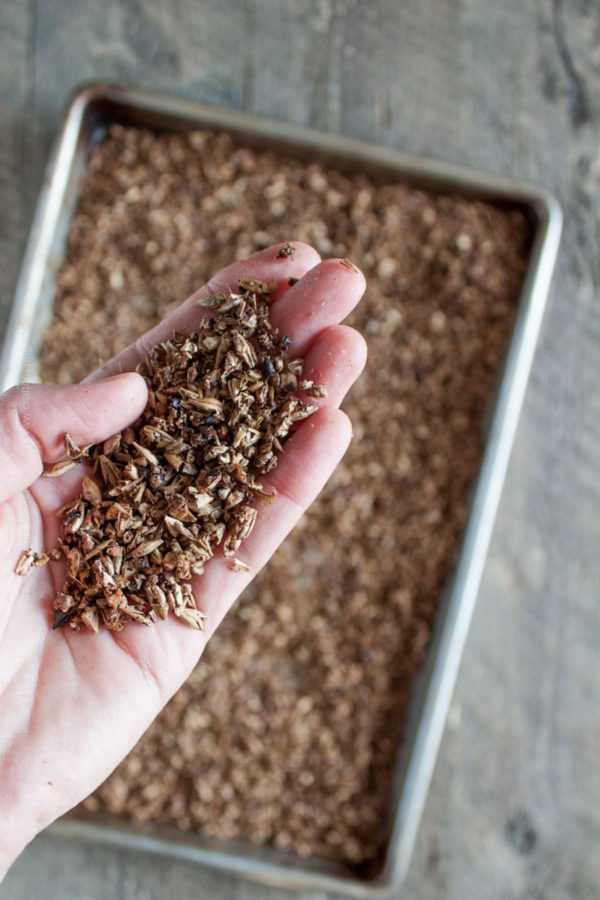
These dehydrated spent grains were from a dunkelweizen grain bill and include Munich dark malt.
In summary:
- Place the moist spent grains in a colander for the excess liquid to drain; press with palms of hands or squeeze out moisture using your fists or a cheesecloth
- Once you have squeezed out as much moisture as possible, spread out the grain on baking sheets forming an even and not too thick layer
- Dry out completely in oven at 150°F (four to six hours)
- Grind into flour using a blender or a grain mill attachment to a stand up mixer*
- Store in an air tight container
*Once the grain has dried and is out of the oven allow it to cool off and then proceed to mill/grind it into flour. Work in small batches and use the highest setting of your blender. Occasionally, check the flour’s progress. Grind until it reaches a reasonably fine consistency.
Where to Get Spent Grain?
Your best bet is to use your own spent grain (if a home brewer) or get fresh spent grain from a home brewer (you have got to know one:).
If neither situation applies to you, then there is probably an independent craft brewery near where you live. The folks who work in small breweries are typically happy and generous and if you ask nicely they will probably tell you on what day they brew and give you a bagful of spent grain free of charge if you stopped by.
Can you Buy Spent Grain Flour?
Suppose you cannot find spent grain or do not feel like drying it and milling flour. Can’t you simply buy the stuff, already milled?
It is not unusual for some craft breweries, especially ones that have a complimentary food service facet to their business to make spent grain flour in house. Sometimes they use it in baked goods, sometimes they even sell it to their patrons or other small businesses like bakeries. There could be a brewery that does that already near you.
With spent grain flour growing in popularity, Chris and I expect to see it become more readily available. Perhaps a major milling operation will get in the game? Bob’s Red Mill, I am looking at you:)
The problem with fresh spent grain is that due to its high moisture content it is prone to spoilage (and fast) and it is quite heavy and bulky to transport. As more breweries add the equipment to dry it shortly after lautering is completed, transporting dried spent grain to milling operations is not too far fetched of an idea. Especially given it’s high nutritional value.
How to use spent grain flour
Typically spent grain flour is combined with other baking flours and wet ingredients in various dough and batter recipes for baked goods – from croissants and muffins to pizza crust.
What is the nutritional value of spent grain flour?
Spent grain flour has a high fiber and protein content and is low in sugars even though some residual sugars do remain from the malted grains even after sparging.
It contains a number of vitamins – folic acid, niacin, biotin, thiamine, choline, pantothenic acid, riboflavin, vitamin E and pyridoxine. It also contains minerals, of which the predominant ones are calcium, magnesium, phosphorus and sodium, but present are iron, copper, potassium, and manganese.
Finally, there are lipids (oils and waxes), resins, tannins and essential oils in spent grain flour.
In preparing for this post, I reviewed a recent scientific article comprehensively dealing with the nutritional value of spent grain and by extension of the flour derived after its dehydration. If you are interested in the complete findings, here is the full text of Composition and Nutrient Value Proposition of Brewers Spent Grain as published in the Journal of Food Science in 2017.
Is Spent Grain Flour Gluten Free?
The short answer is no.
What are Substitutes for spent grain flour in recipes that call for it?
The best substitute for spent grain flour is bran flour. It is also a rich source of dietary fiber.
Spent Grain Flour Recipes
Spent Grain Skillet Cookie
Spent Grain Cheese Crackers (to be posted imminently)
Spent Grain Pizza Dough (to be posted imminently)
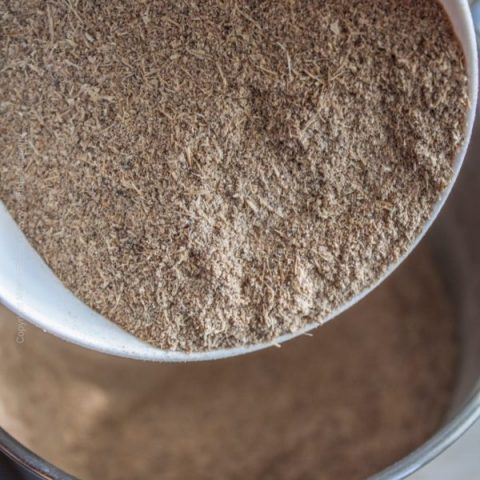
Spent Grain Flour
Spent grain flour is easy to make, it just requires some time. This easy to follow recipe uses basic kitchen equipment.
Ingredients
- fresh spent grain
Instructions
- Keep the fresh spent grain refrigerated until you are ready to begin work with it.
- Eliminate as much of the moisture content as possible by placing in a cheese cloth and squeezing out the water or placing spent grains in a colander over a baking sheet and pressing on it to squeeze out moisture. if you feel so inclined, a good old fist squeeze is really effective, just needs to be repeated quite a few times.
- Spread the spent grain into thin layer onto as many baking sheets as your quantity needs. You may need to dry two batches of four baking sheets consecutively. Keep any spent grains not being dried in the refrigerator.
- Dry in oven set to the lowest setting, usually this is 150°F, for 4 - 6 hours. Precise time depends on how much moisture you were able to squeeze out already and how thick you spread the grain onto the baking sheets.
- Occasionally move the grains around with a wooden spoon to help them dry out more evenly.
- When the grain is completely dry, take the sheets out of the oven and allow it to cool off.
- Use a powerful blender or a grain mill attachment to grind the dried spent grain into a flour with a fine consistency. Work in small batches.
- Store spent grain flour in an air tight container.

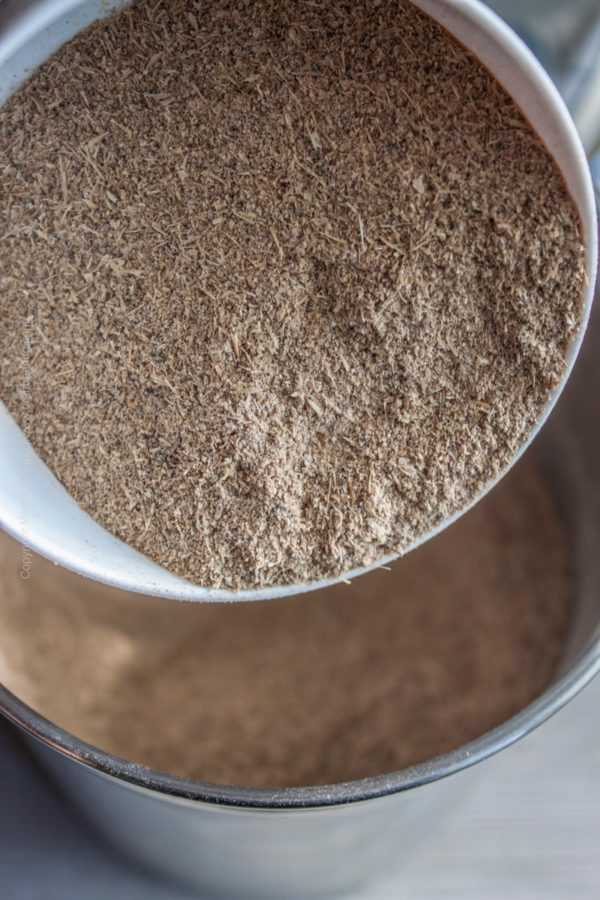
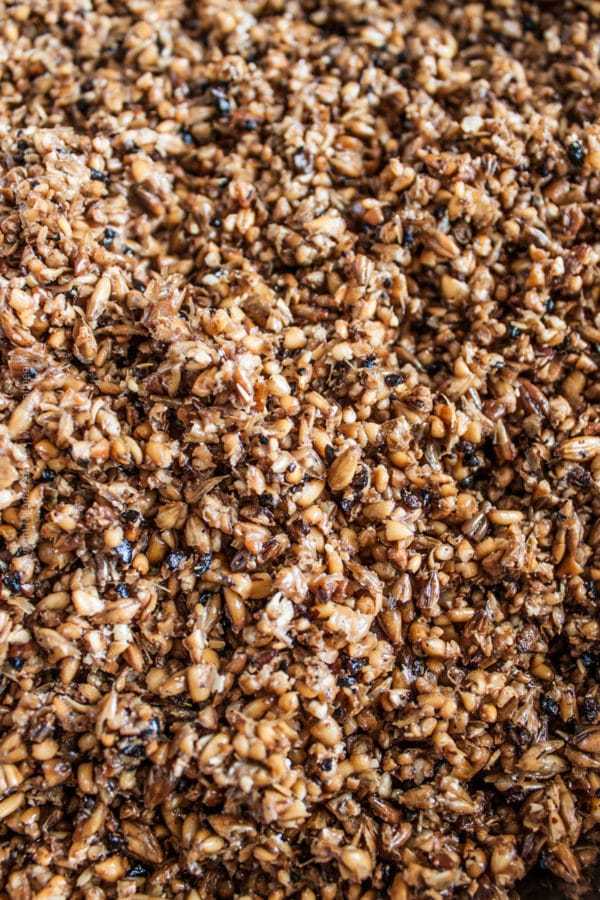
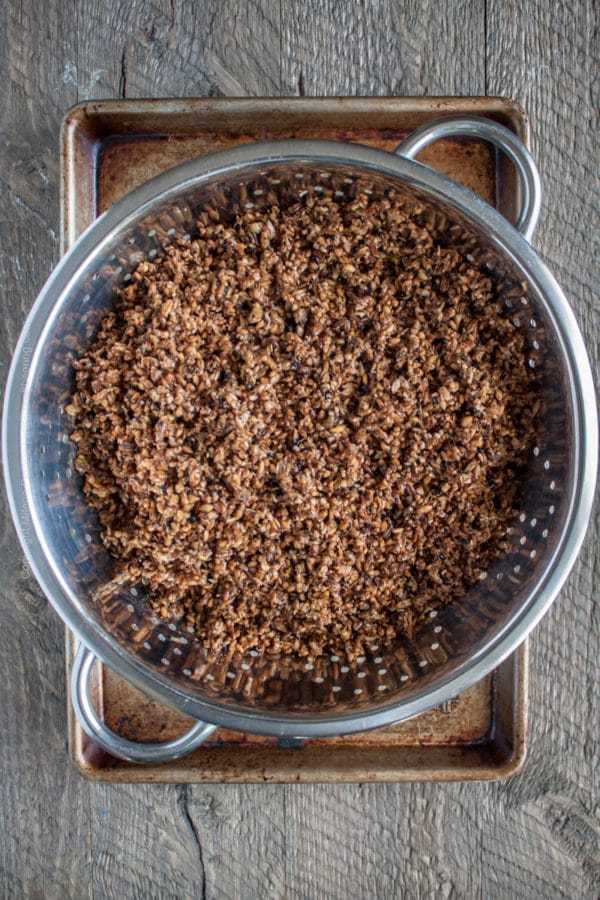
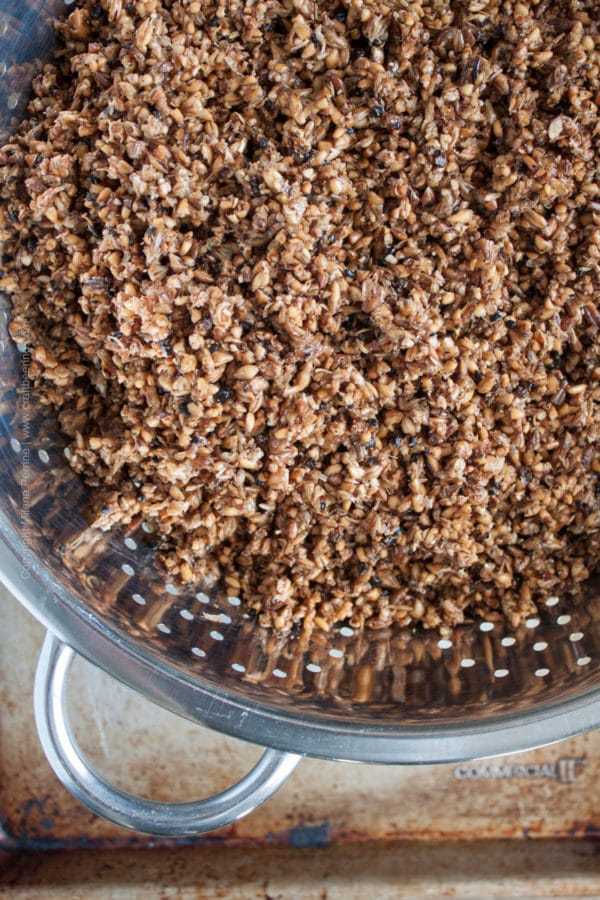
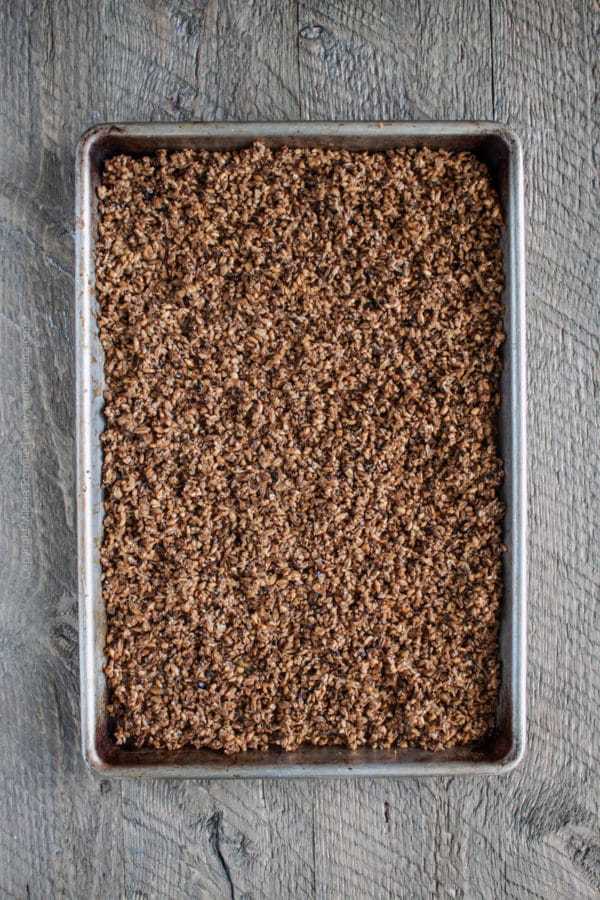
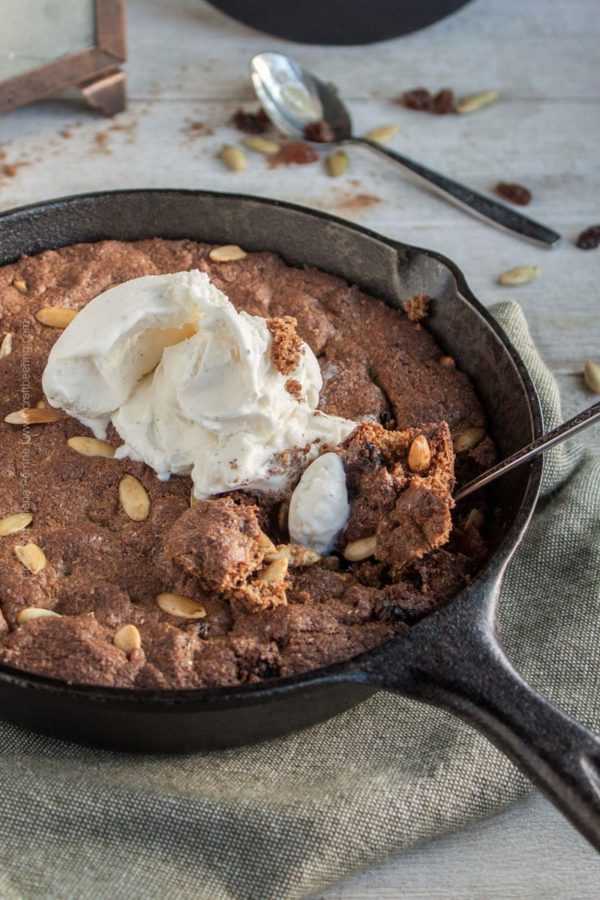
John Cary says
I see this recipe is from craft beer grains. Have you tried using the grains from bourbon?
Nancy says
Would you happen to know, or guess, at what temp in a dehydrator one can dry the spent grains at? I understand the oven method. Just trying to see about using a dehydrator. Thank you for your article. Very informative.
Milena Perrine says
Nancy, I would guess about 130 F or a bit lower.
ZaSu Pitts says
Grain4Grain sells “Barely Barley” flour (and various pancake mixes) on Amazon.
from their website:
“We are a San Antonio based FoodTech startup. A couple years ago, we developed a patent pending process that allows us to dry and mill byproducts, specifically brewers spent grain, into a low carb, high protein flour. Spent grain is the number one byproduct from breweries and for over 100 years, breweries have been trying to develop a way to capitalize on this resource–think whey protein from cheese making.
Our innovative methodology allows us to dry and mill brewers spent grain in under 20 minutes, down from the conventional 6 hours–enabling us to provide this incredibly healthy and sustainable ingredient at affordable prices to consumers and product makers.
“Affordable” is such an elastic term, isn’t it? It’s kind of pricy but for Keto flour, it’s not too bad 😉
Olubunmi Osiyoku says
Do you deliver this to the UK? Or is it currently available on Amazon?
Milena Perrine says
No, this is simply a DYI tutorial, we make our own whenever we brew.
Teddi says
My hubby brews his own beer and we use spent grains for a lot of recipes from waffles pancakes pizza even dog cookies such great health benefits
Mary Anne Squillace says
Hi there is a company in Rhode Island that makes whole spent grain, spent grain flour and baking mixes. And they avoid squeezing out the liquids prior to dehydration as much of the protein and nutrients are lost.
CraftBeering says
Thank you for the info, Mary Anne! It’s great to hear about their process too.
Becs says
Love this! I know it’s best to use the flour fresh, but how long will it keep in an airtight container?
CraftBeering says
Hi Becs,
It should keep for months. We typically make small batches frequently so the longest we’d have it is three to four months. However, recently I found an ‘overflow’ zip lock bag with spent grain flout I’d made last March (it contained excess of what fits in my usual stainless steel container for it and I had placed it deep in the pantry). It seemed fine and we baked cheese crackers with it – nobody died:)
Becs says
Awesome! Thanks so much!
Mary says
I’ve never heard of Spent Grains, you always introduce me to something new. I would love to make my own flour, don’t threaten me with a good time. I learn so much from your posts! You’ve opened my mind up to so many things.
CraftBeering says
Haha! Next time you are at a brewery get some spent grain and make flour:) Thank you so much, Mary!
Nicoletta @sugarlovespices says
I think what you and Chris do is awesome! I am learning so much from your posts. I remember commenting on your spent grain skillet cookie where I found out about the existence of such a flour. Now, learning about the whole process, which is so incredibly interesting. And, boy, does spent flour is nutritious! Thank you!
CraftBeering says
Thank you, Nicoletta! Yes, it is a really nutrient rich addition to so many baking recipes, we hope that in the near future people will be able to buy it and use it. We certainly have a lot of recipes to share that use it!
Kelsie | the itsy-bitsy kitchen says
This is so interesting. I think you know about my love for bread-baking and I’m dying to try spent grain in my favorite sourdough recipe. I guess I’ll have to make friends with some brewers. . .(The life of a baker is such a challenge, haha!) I’m really excited to see your pizza dough recipe. I bet it makes the best pizza ever! Have a great week!
CraftBeering says
Thanks, Kelsie! Lol, may not be the best pizza ever, but it certainly gives the dough a wholesome texture and warm, complex flavor. I better hurry up and work on pics and write posts:).